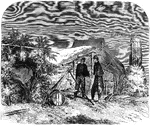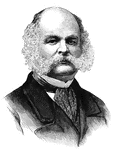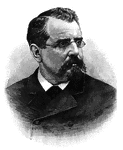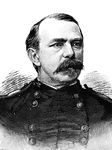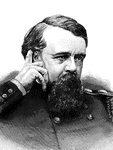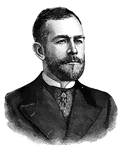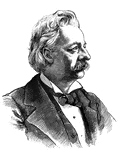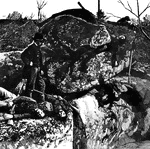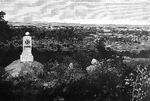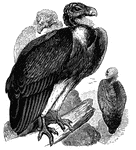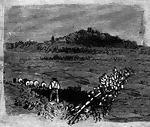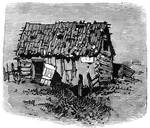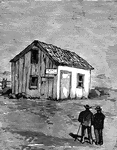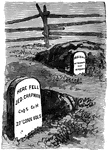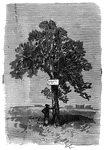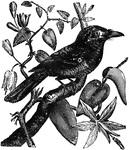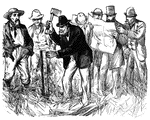
Battle of Grand Coteau
"The war in Louisiana- Battle of Grand Coteau- capture of the Sixty-seventh Indiana by the Texas Mounted…

Lafayette Parish
"The war in Louisiana- General Franklin's army crossing the prairie in Lafayette Parish, November 16th,…

Fifth Corps
"The siege of Petersburg- the Fifth Corps awaiting the order to advance, July 30th, 1864."— Frank…
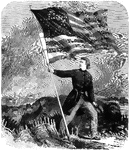
Old Flag
"The old flag again on Sumter- raised (on a temporary staff formed of an oar and boathook) by Captain…

Antietam
"The invasion of Maryland--General Meade's Army crossing the Antietam in pursuit of Lee, July 12th,…

Valley of the Shenandoah
"Sheridan's campaign in the Valley of the Shenandoah- Battle of Summit Point, Sunday, August 21st, 1864."—…

Selden Estate
"The war on the Upper Potomac- Wilson's Cavalry foraging at the Selden Estate, Clarke County, Va."—…

Jackson Hill
"Sheridan's campaign in the valley of the Shenandoah- view of the front from the Federal lines on Jackson…

Battle of Poplar Spring
"Grant's movements south of the James- Battle of Poplar Spring Church- gallant charge of a part of the…
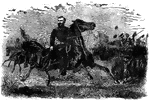
General Sheridan
"Major General Sheridan riding along the lines after the Battle of Fisher's Hills, Va., September 22nd,…

Battle of Poplar Spring Church
"Grant's movements south of the James- Battle of Poplar Spring Church- the Ninth Corps passing Poplar…
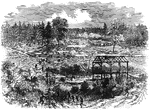
Battle of Hatcher's Creek
"The army of the Potomac- Battle of Hatcher's Creek, Va., October 27th, 1864- the Second Corps, under…

Chimney Architecture
"Scene in camp life- chimney architecture- the Federal soldiers at their camp fires."— Frank Leslie,…

Charleston
"Seacoast operations against Charleston- brilliant dash and capture of Confederate rifle pits and prisoners…
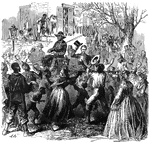
President Lincoln
"President Lincoln riding through Richmond, Va., April 4th, 1865, and the enthusiastic cheers of the…
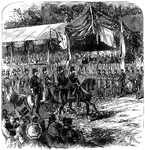
Grand Review
"The Grand Review at Washington, D. C., May 24th, 1865- President Johnson, Lieutenant General Grant…

Hancock Monument
"The point where major General Winfield Scott Hancock was wounded."— Frank Leslie, 1896
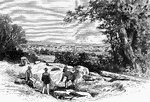
Battlefield of Gettysburg
"The battlefield of Gettysburg- breastworks, Culp's Hill- Gettysburg in the distance."— Frank…

Battle of Gettysburg
"The Battle of Gettysburg, Friday morning, July 3rd, 1863. In our illustration may be studied the struggle…
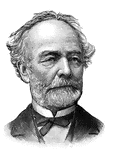
General Joseph E. Johnston
"General Johnston, born in Cherry Grove, near Farmville, Va., February 3rd, 1807; died at Washington,…
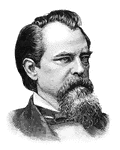
General J. B. Gordon
"General Gordon, born in Upson County, Ga., February 6th, 1832. He was educated at the University of…
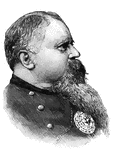
General Fitzhugh Lee
"General Lee, born in Clermont, Fairfax County, Va., November 19th, 1835, was graduated at the United…
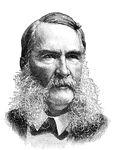
General James Longstreet
"General Longstreet, born in Edgefield district, S. C., January 8th, 1821, was graduated from the United…
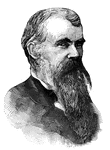
General William Mahone
"General Mahone, born in Southampton County, Va., December 1st, 1826; died at Washington, D. C., October…

Fork-Tailed Kite
"The fork-tailed kite, (N. furcatus) is twenty-five inches long; the wings and tail black;…
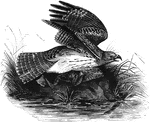
Red-Shouldered Hawk
Also known as the winter falcon, is found in California, Wisconsin, and South Carolina.
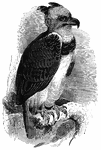
Harpy Eagle
Genus Harpyia, it is one of the largest, most fierce, and powerful eagles. It has a crest of…
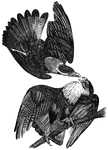
Caracara Eagle
The caracara eagle, genus Caracara found in Cental and South America, as well as portions of…

Fork-Tailed Psalurus
Native to South America, the males of this species are known for their pair of prominent tail feathers.
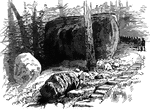
Ascent of Round Top
"Visit of Union and Confederate officers to Gettysburg, the ascent of Round Top."— Frank Leslie,…
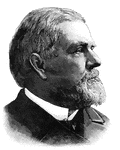
General John Newton
"General Newton, born in Norfolk, Va., August 24th 1823. He was graduated at the United States Military…

Farmers Visiting
"Maryland and Pennsylvania farmers visiting the battlefield of Antietam, while the Federal troops were…

Battle of Antietam
"The battle of Antietam. The One Hundred and Thirtieth Pennsylvania Regiment of Volunteers burying the…
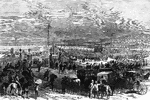
Antietam National Cemetary
"The dedication of the Antietam National Cemetary, at Sharpsburg, Md., on Tuesday, September 17th, 1867.…

Battle of New Berne
"The battle of Newberne- final and successful charge of the Federal troops under General Burnside, on…
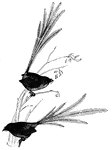
Emu Wren
Native to Australia, this is known to natives of New South Wales as waw-gul-jelly. It is shy…
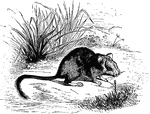
White Footed Tree Rat
Hapalotis Albipes. "Nearly the size of a rabbit, but of mouse-like form, and is chiefly found in New…
